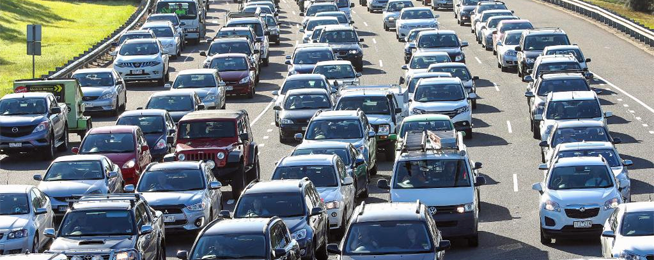No wonder there is not enough money being spent on bike infrastructure – it’s all being wasted on numerous, politically inspired projects that just don’t stack up.
That’s not a bike nut talking, it is the official word from Infrastructure Australia, the Federal Government authority charged with prioritising the importance of the nation’s infrastructure wish list.
Fed up with governments across Australia pushing low-benefit, high-cost projects to the front of the queue, IA is introducing a set of infrastructure decision making principles to try and cull the rubbish projects and replace them with economically valuable infrastructure instead.
Many studies have found that bike infrastructure delivers high benefits in relation to the cost of building it. Returns where benefits are more than two times the cost are not uncommon.
This means such projects are valuable to the community.
Yet governments are neglecting such infrastructure and spending up big on road widening and bridges that are lucky to have a benefit cost ratio of 1, i.e., where the benefits don’t exceed to costs.
The infamous East-West Link in Melbourne, currently being offered funding by the Federal Government, has a ratio of .45. i.e., more than half of the multi-billions it would cost to build it would be wasted.
“Australians expect decisions on public infrastructure projects to be robust, transparent and accountable”, Infrastructure Australia says.
“Businesses and households across the country rightly want to know that governments are investing limited public funds in infrastructure that will bring strong productivity benefits to the economy, support our quality of life, and help to deliver a collective vision of a strong, fair and prosperous Australia for many years to come.”
The problem is not just that projects with scant benefits are being approved ahead of better projects.
More serious is the habit of politicians announcing projects prior to a business case being undertaken. Usually around election time, and in or near a marginal seat, with photo opportunities attached.
Billions of wasted dollars are pouring down the drain as a result while first-class bike projects are overlooked.
“Too often we see projects being committed to before a business case has been prepared, a full set of options have been considered, and rigorous analysis of a potential project’s benefits and costs has been undertaken,” IA says.
If followed, bike infrastructure would get a much higher priority than it does today.
You can read the full list of 11 principles here.
Outgoing Chief speaks to AFR
The outgoing CEO of Infrastructure Australia Philip Davies recently spoke to the Australian Financial Review and said that there needs to be a culture change.
“We need to change the culture ... government departments need to be more engaged with the community around what choices they want to have but we're still not doing that, we're leading with the infrastructure solution when the community doesn't even know what the problem is that we're trying to solve," Mr Davies said.
Read more in the Australian Financial Review weekend
Who is Infrastructure Australia?
Infrastructure Australia is an independent statutory body with a mandate to prioritise and progress nationally significant infrastructure.
Back in April 2018, the same body recommended that a 300km connected network of bike paths across Sydney should be a national priority as a way to help combat and alleviate congestion.


